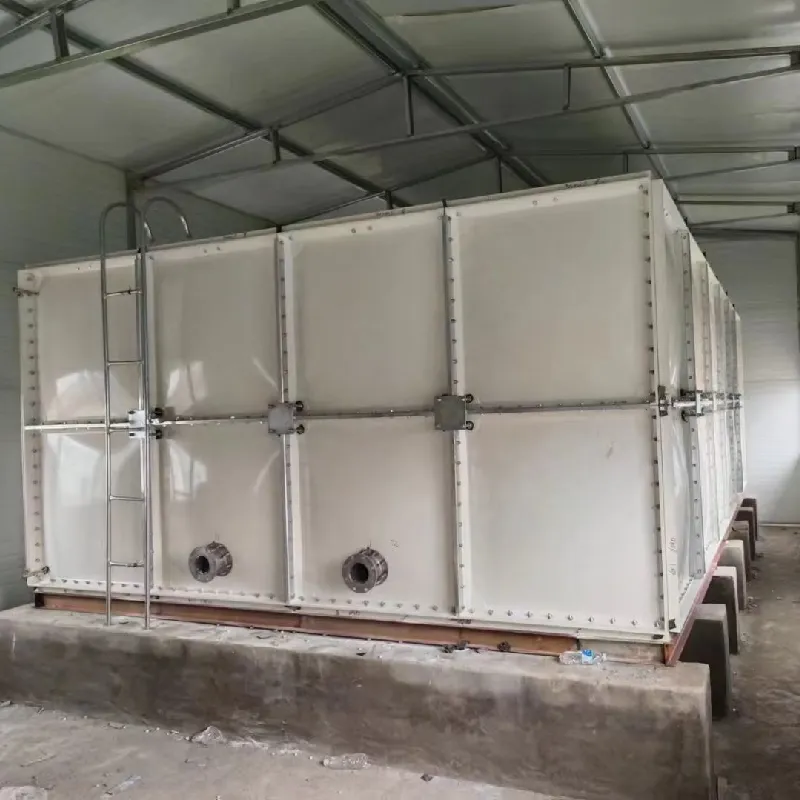loading...
- No. 9, Xingyuan South Street, Dongwaihuan Road, Zaoqiang County, Hengshui, Hebei, China
- admin@zjcomposites.com
- +86 15097380338
- Welcome to visit our website!
Exploring the Benefits and Applications of GRP Sandwich Panels in Construction
Understanding GRP Sandwich Panels Benefits and Applications
Glass Reinforced Plastic (GRP) sandwich panels are a modern construction material that has gained popularity across various industries due to their unique properties. Composed of an inner core material – typically made from polystyrene, polyurethane, or other lightweight materials – sandwiched between two layers of GRP, these panels offer a plethora of advantages, making them an excellent choice for both structural and aesthetic applications.
Key Features of GRP Sandwich Panels
1. Lightweight Construction One of the most significant benefits of GRP sandwich panels is their lightweight nature. This allows for easier handling and installation, reducing labor costs and time during construction.
2. Durability The GRP material is resistant to corrosion, chemicals, and environmental stresses. This durability ensures longevity and reliable performance in various weather conditions and industrial environments.
3. Thermal Insulation The insulation properties of sandwich panels are superior compared to traditional materials. The core materials often offer excellent thermal resistance, making them ideal for temperature-sensitive applications, such as refrigeration and climate-controlled environments.
4. Sound Insulation In addition to thermal properties, GRP sandwich panels also provide sound insulation, which is beneficial in construction projects where noise reduction is critical, such as schools or hospitals.
5. Fire Resistance Many GRP sandwich panels are designed to be fire-resistant, which enhances the safety of the structures they are used in. They can be manufactured to comply with stringent fire safety regulations, making them suitable for a wide range of applications.
Applications of GRP Sandwich Panels
grp sandwich panels

1. Building and Construction GRP sandwich panels are extensively used in building facades, roofing systems, and internal partitions. Their aesthetic appeal combined with functional benefits makes them a favorite choice for architects and builders.
2. Cold Storage Due to their excellent insulating properties, GRP sandwich panels are commonly used in the manufacture of cold storage facilities. They help maintain low temperatures and reduce energy consumption, thus lowering operational costs.
3. Transportation In the transportation industry, GRP sandwich panels are utilized for manufacturing trailers, containers, and even railway coaches. Their lightweight nature contributes to improved fuel efficiency and load capacity.
4. Marine Applications GRP sandwich panels are resistant to water and corrosion, making them ideal for marine applications. They are used in the construction of boats, yachts, and coastal structures due to their strength and longevity.
5. Clean Rooms In healthcare and pharmaceutical industries, maintaining cleanliness is paramount. GRP sandwich panels can be engineered for easy cleaning and can help maintain sterility, making them excellent for use in clean rooms and laboratories.
Environmental Considerations
With increasing awareness of environmental issues, the construction industry is under pressure to adopt sustainable practices. GRP sandwich panels are often manufactured using recyclable materials and can themselves be recycled at the end of their lifecycle. Furthermore, their energy-efficient properties can lead to reduced energy consumption in buildings, supporting green building initiatives.
Conclusion
GRP sandwich panels exemplify the convergence of innovation and practicality in modern construction materials. Their lightweight design, durability, and superior insulating properties make them an invaluable resource across various sectors, from building and transportation to marine applications and clean rooms. As industries continue to seek sustainable and efficient materials, GRP sandwich panels will likely play a crucial role in shaping the future of construction and design. Understanding their benefits and applications can help businesses make informed decisions, contributing to safer, more efficient, and environmentally friendly practices in their respective fields.
-
The Rise of FRP Profiles: Strong, Lightweight, and Built to LastNewsJul.14,2025
-
SMC Panel Tanks: A Modern Water Storage Solution for All EnvironmentsNewsJul.14,2025
-
GRP Grating: A Modern Solution for Safe and Durable Access SystemsNewsJul.14,2025
-
Galvanized Steel Water Tanks: Durable, Reliable, and Ready for UseNewsJul.14,2025
-
FRP Mini Mesh Grating: The Safer, Smarter Flooring SolutionNewsJul.14,2025
-
Exploring FRP Vessels: Durable Solutions for Modern Fluid HandlingNewsJul.14,2025
-
GRP Structures: The Future of Lightweight, High-Performance EngineeringNewsJun.20,2025
